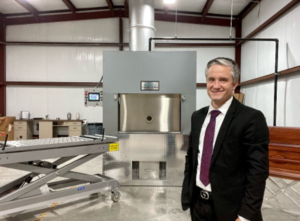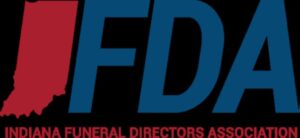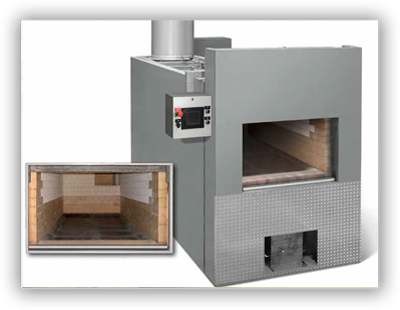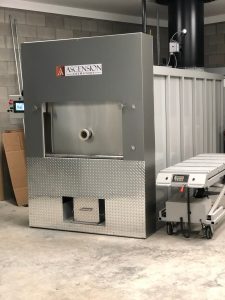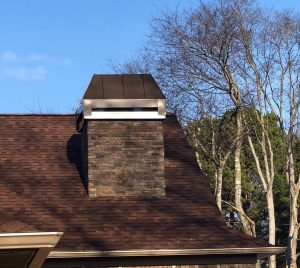Covid 19 and the cremation furnace, what did we learned from our Q&A?
After requesting a short sit-down to discuss cremation furnaces, we analyzed our findings on what makes a cremation furnace great . We asked crematorium operators if there was one prevailing concern that they all shared regarding their cremation furnaces.
The State of Our World Today
Globally, the use of crematories and cremation furnaces has been on the rise for some time. Cremation services and crematories have been slowly replacing traditional burials since the late 1950s. The percentage has escalated from 5% all the way to 60%. It is estimated that in North America alone, we will see the number of people who opt for cremation to reach percentages of over 70% in the next several years.
With funeral homes and crematoriums experiencing such rapid growth, society’s focus on environmental health and the immense demand for efficiency due to the Covid-19 pandemic, how are cremation furnaces holding up to the challenge?
Understanding the System
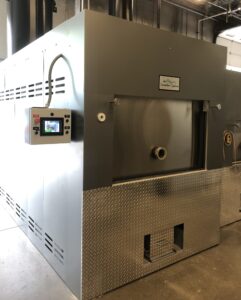 We need to recognize that cremation ovens/furnaces have many parts. From the refractory, primary burners, the cremation chamber, hearth, thermocouple, and control panel, each moving part needs to be designed and able to function for performance and efficiency. But what is the main concern faced by cremationists when considering what furnace to invest in for their new or replacement cremation furnace?
We need to recognize that cremation ovens/furnaces have many parts. From the refractory, primary burners, the cremation chamber, hearth, thermocouple, and control panel, each moving part needs to be designed and able to function for performance and efficiency. But what is the main concern faced by cremationists when considering what furnace to invest in for their new or replacement cremation furnace?
We contacted 15 funeral homes and crematoriums and spoke with their directors and cremationists about the cremation process and their specific cremation furnaces. Then we contacted them a second and third time .
Instead of a straight answer, we were met with ‘we will have to call you back’ or ‘the director is not available right now’ or even, ‘you’ll have to call back; they are just too busy to talk right now’. Of course, this is in no way an attempt to paint these cremationists as unprofessional. This is more a statement on the state of the industry and demand that they are experiencing.
Our Thank You
We are thankful to all of you who have tirelessly found their way back to your work, to serve and care for so many in need. You have faithfully walked so many through the cremation process from initial consultation with the family to the final handling of the cremated remains and the funeral service. We want to pause our blog to say thank you!
The CFS2300
From New York to LA and everywhere in between, funeral homes have been, sadly, inundated with calls for cremations of loved ones due to this global pandemic. Stories of human bodies pilling up in mortuaries and funeral homes are far too common. Funeral directors and county morgues are scrambling to find proper storage solutions that are both effective and honoring to the deceased and their loved ones.
One small county in South Carolina watched demand go from 150 individuals per year to over 3,000. A mortician in Idaho created an external refrigeration unit from a train car that can temporarily house up to 56 dead bodies. Examples like these are far too common.
As we helplessly watch the death toll rise to over 700,000 in the United States, and approach 5 million worldwide, the demand for cremations are only rising too. Our hopes for an in-depth look and Q&A on all things related to the cremation furnace, its efficiency and function will just have to wait for a little bit longer.
In the absence of the data we hoped to have collected through our interviews, we will quickly dive into what makes the CFS 2300 cremation furnace safe, efficient and perform at the rate needed to satisfy demand.
The CFS 2300, designed by Armil CFS engineers and provided to you from Cremsys, was designed to be easy and efficient to operate. Case data is easily entered with the touch screen controller–one of the most comprehensive and intuitive, user-friendly touch screens available. This means no timers, switches or guessing for the crematory operator when it comes time for the cremation process to begin.
Performance & Efficiency
Armil CFS engineers designed the Cremation Systems CFS 2300, utilizing the most up to date industrial technology available. Here are some of the system’s most notable features:
- One step, automatic operation – utilization of an advanced “Set Point Programming” to control the temperature for a completely automatic cremation cycle.
- Touch screen digital controls – Store case data on a flash drive and can send it to any PC or smart phone via email.
- High efficiency refractory lining – a combination of premium firebrick, pre-cast refractory shapes and ceramic fiber insulation for a lightweight, energy-efficient lining protecting against heat loss.
- Recessed hot hearth design accommodates large cases up to 750 lbs.
- 150 lbs. per hour cremation burn rate at less than $15 per cremation.
Safety Features
The Fire Marshal monitoring system comes standard with the CFS 2300 and monitors the temperature in the retort stack area to prevent potential fire conditions. The Fire Marshal operates on-site or remotely to safely monitor and control your retort during all operating cycles. Take a look at some of The Fire Marshal’s key features:
- Audible alarm sounds when stack area temperature reaches 400 degrees Fahrenheit
- Email alert to your smart phone and personal computer when stack area temperature reaches 450 degrees Fahrenheit
- Automatic shut-down of the retort when stack area temperature reaches 500 degrees Fahrenheit, preventing the occurrence of any potential fire at these high temperatures.
- Annual reporting requirements made fast and easy providing complete data acquisition of all case documentation during retort operation
CFS2300 Human Cremation Chamber Extras:
The CFS 2300 also includes the following:
- CFS 2300 units arrive at your site ready to connect to natural gas and electric and are installed by Cremation Systems personnel.
- Hot hearth, recessed design with Quick Change Hearth tiles – Quick Change hearth is a pre-cast refractory tile system. These tiles are in stock, minimizing cremator downtime by allowing for one-day hearth repair and easy sub-hearth access.
- Automatic pollution monitoring and control – An opacity sensor in the CFS 2300 monitors emissions, ensuring EPA requirements are met.
- Tek Marshal™ is the first internet retort diagnostic product to help identify combustion and control issues, electrical issues and dirty smoke monitors without a service tech visiting your crematorium.
We will circle back and create a part II of this blog and begin our conversation with directors and cremationists. Our hope is to unveil more on the performance, safety, and efficiency of cremation ovens and of the CFS2300 Cremation Chamber.
In the meantime, if you would like to learn more about cremation equipment, installation or start up requirements, please Contact Cremation Systems. For more quick information right here on our site, please read our informative page on starting a cremation business.
 South Holland, IL – Cremation Systems, a leading manufacturer of cremation equipment, is pleased to announce an agreement with Addfield Environmental Systems to become a distributor of Addfield pet cremation equipment in the United States. This relationship allows Cremation Systems to expand their pet cremation product line to better serve customers and prospects at every business stage.
South Holland, IL – Cremation Systems, a leading manufacturer of cremation equipment, is pleased to announce an agreement with Addfield Environmental Systems to become a distributor of Addfield pet cremation equipment in the United States. This relationship allows Cremation Systems to expand their pet cremation product line to better serve customers and prospects at every business stage.